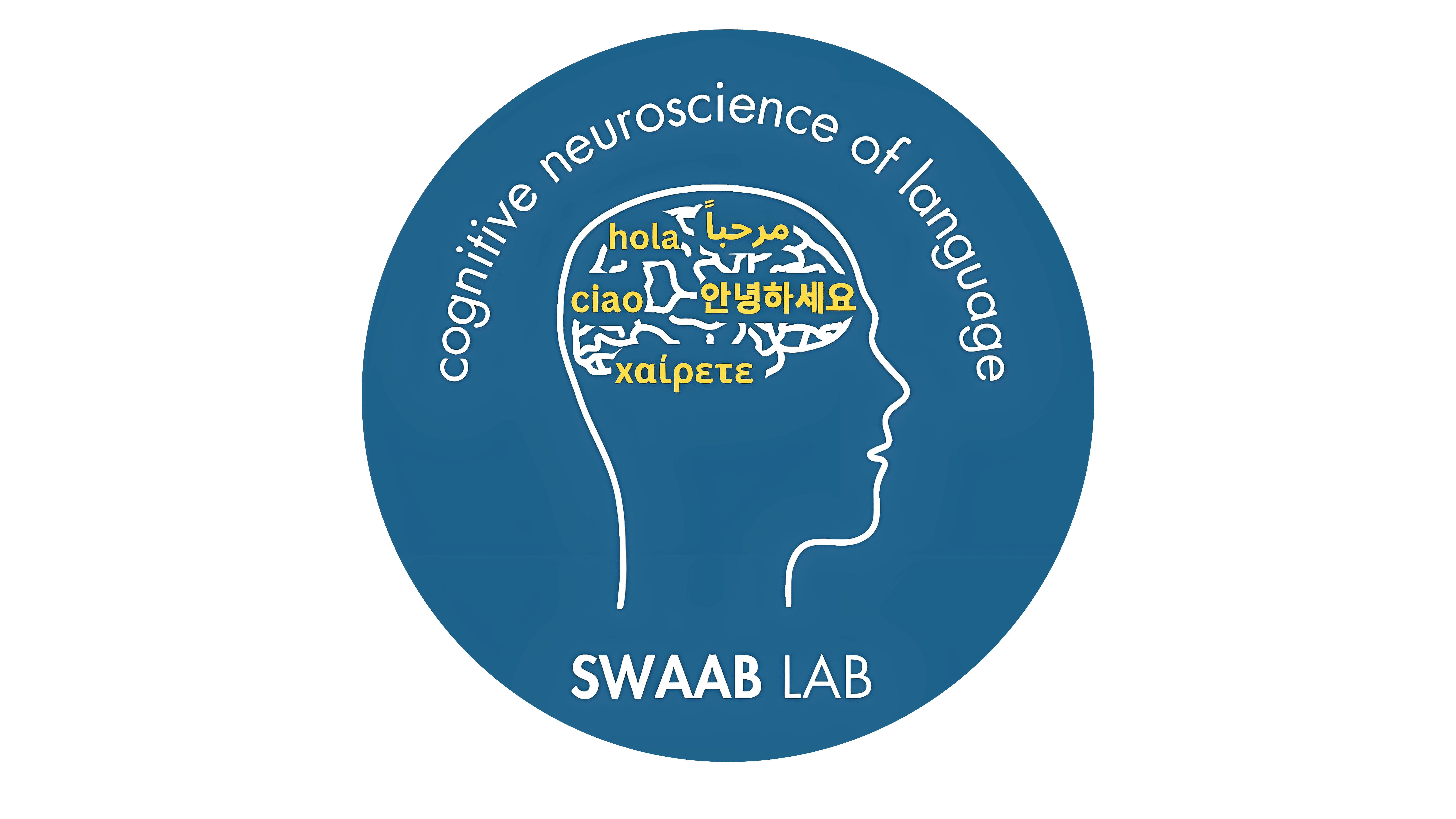Electrophysiological studies of language
Our lab is dedicated to uncovering the cognitive and neural mechanisms that support language
processing. By using advanced EEG and ERP techniques, we investigate how the brain
enables individuals to comprehend, produce, and adapt to language in real time.
Electroencephalography (EEG) and event-related potentials (ERPs) can be used to
examine how the brain processes language as it unfolds in real time. EEG is a non-invasive
method that measures electrical activity in the brain. ERPs are specific patterns in this brain
activity that occur in response to events, such as hearing or reading a word. These tools allow
us to explore how the brain responds to and predicts language with millisecond precision,
providing unique insights into the timing and mechanisms of language processing.
A recent focus of our research is bilingualism, where we explore how diverse bilingual
experiences shape cognition, prediction, and language processing.
If you’d like to participate or are signing up to participate in one of our EEG experiments, you
can read more about the specifics of the procedure below.
EEG
EEG is short for electroencephalogram (“electro” - electric; “encephalon” - from the Greek
enkephalos meaning brain, and “gram” - from the Greek graphein meaning to write), a device
which measures the electrical activity of the brain. The data is recorded by placing an EEG cap
snugly around the head and hair. This cap must be tight to the surface of the scalp because it
contains electrodes that have to contact the scalp to get an accurate reading of the brain. This
device is associated with minimal risk and is entirely non-invasive.
Our Procedure
We have a set procedure to ensure that the EEG data collected is of good quality. To ensure
quality, there are a number of steps that we take regarding the equipment and our participants.
First, we ask that participants remove any head coverings and arrange their hair into a style that
is compatible with our equipment. Please let us know if you require a female team for the EEG
process to ensure that you are comfortable removing head coverings. Additionally,
recommended hairstyles for longer hair are: a loose ponytail at the base of the head or two low
loose braids extending back from the temples on either side to the base of the head. Hairstyles
such as cornrows or other tight braids, locs, and wigs, weaves, or other types of extensions may
prevent the electrodes from being able to make contact with the scalp so we ask that you please
remove them prior to the experiment.
Second, we must place electrodes, separate from those on the cap, directly on the face and
head, specifically behind the ears and near the eyes. These electrodes are attached with non-
irritating adhesive stickers.
Next, we add gel to the space between the electrode and the skin. This gel is also non-irritating
and is added using a blunt-tipped applicator. The applicator resembles a needle and syringe.
However, the tip is blunted and is NOT intended to break the skin. It will ONLY be used to place
gel on the surface of the skin. The gel can be easily removed with water once the study is
completed.
After that, the electrode cap will be placed on the head and gel will be added to the cap
electrodes in the same way that it was added to those on the face.
Note: The process of applying the electrodes requires that the researcher(s) are often in close
proximity to the participant and are required to touch the participants face, head, and hair. The
researcher(s) will be wearing sterile gloves during this process and will not touch the
participants in any other places on the body to complete the procedure. Additionally, we unfortunately are not a wheelchair accessible space.
To collect the data, participants will be required to remain in the room with the equipment
attached for the duration of the experiment(s). This can take ~2 hours. Throughout the data
collection process, the participant will be seated alone in a closed, dark, quite room. The
researcher(s) will regularly check on the participant during the experiment(s).














